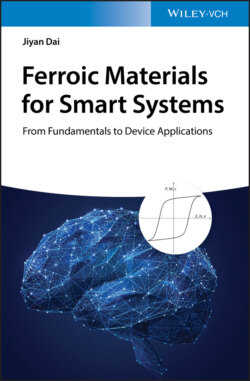Читать книгу Ferroic Materials for Smart Systems - Jiyan Dai - Страница 17
1.3.2 Magnetic Field Sensor Based on Multiferroic Device
ОглавлениеIf a material possesses more than one of the ferroic properties of ferroelectric, ferromagnetic and ferroelastic, it is called multiferroics. Unfortunately, such materials are rare and are usually strong in one property but very weak in another, such as BiFeO3, which is very strong in ferroelectrics but very weak in ferromagnetic (it is antiferromagnetic in fact). This makes multiferroic materials hard to be practically applied in devices. However, people have been trying to make composite materials such as piezoelectric with magnetostrictive materials, where the mechanical coupling between them makes the “multiferroic” meaningful for device application, for example, making very sensitive magnetic field sensor.
The magnetoelectric (ME) effect is the phenomenon of inducing magnetization by an applied electric field (E) or polarization by magnetic field (H). Many efforts have been devoted to improve the limit of detection of the ME composite at low frequency range, and values of ∼10−7 Oe at 1 Hz has been reported (Wang et al. 2011). Based on the magnetic–strain–electric coupling, scientists have demonstrated dc magnetic field sensor with a detection limit of 2 × 10−5 Oe to dc magnetic field with a nonlinear ME magnetic effect (Li et al. 2017). Ferroelectric material PZT and magnetostrictive material Metglas have been implemented in the composite device (see Figure 1.12).
Figure 1.12 Outline of ME device from Virginia Tech and schematic of the cross‐section of the ME composite.
Source: Wang et al. (2011). Adapted with permission of John Wiley and Sons.
